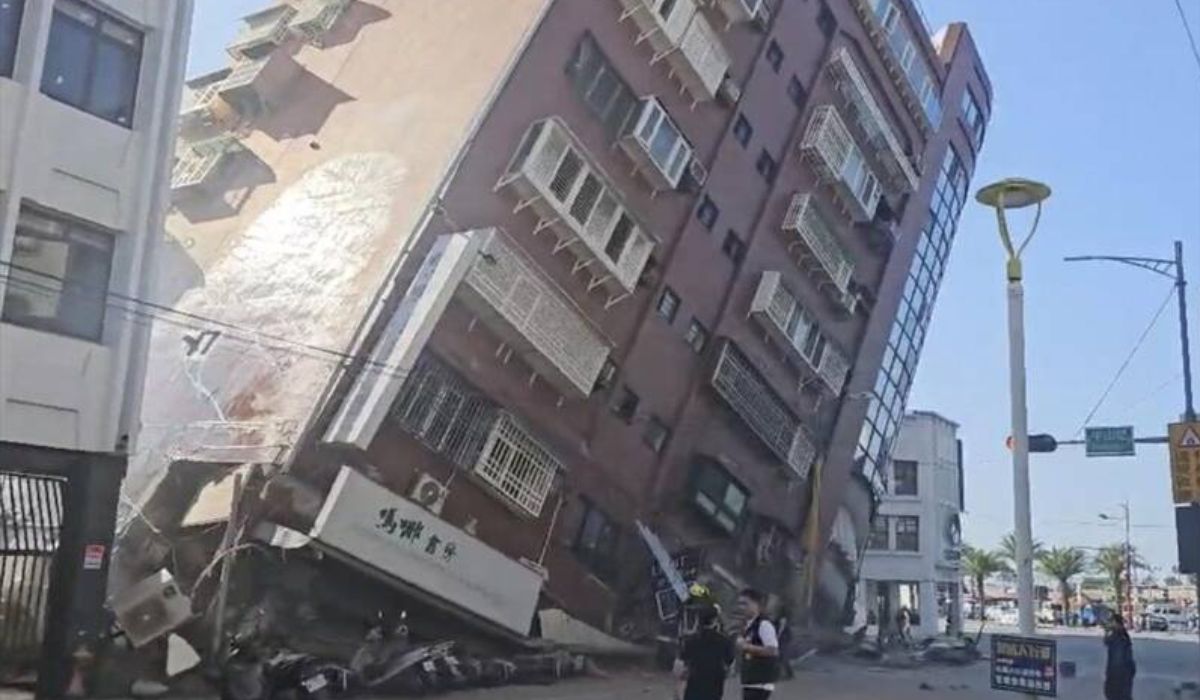News
Devastating Taiwan Quake Leaves Trail of Destruction

TAIPEI, Taiwan – A powerful 7.2 magnitude earthquake struck Taiwan’s east coast during the morning rush hour on Wednesday, collapsing buildings, triggering landslides, and leaving at least seven people dead and over 700 injured across the island nation.
The quake, one of the strongest to hit Taiwan in over two decades, struck just before 8 a.m. local time (0000 GMT) around 21 kilometers (13 miles) northeast of Hualien city, a scenic tourist hotspot. Its shallow depth of just 15.5 km (9.6 miles) amplified the shaking in a region already prone to tremors as it sits along the seismically active Ring of Fire.
As the violent shaking reverberated across the island, entire buildings tilted precariously while some were flattened completely. Highways cracked open, bridges were damaged, and rockslides buried roads – scenes reminiscent of the catastrophic 1999 Jiji earthquake that claimed over 2,400 lives.
“It was very strong. It felt as if the house was going to topple,” recounted Chang Yu-lin, a 60-year-old hospital worker in Taipei who was jolted awake by the violent tremors.
The powerful quake triggered a brief tsunami warning for southern Japan and the Philippines, though it was lifted a few hours later after only small waves were observed. Nearly 500 miles away in Shanghai, residents reported feeling the earth move beneath their feet.
Nowhere was the destruction more evident than in Hualien County, home to around 300,000 people on Taiwan’s east coast. Dramatic scenes unfolded as rescuers used ladders and ropes to extract survivors trapped under collapsed buildings and inside crumpled vehicles.
According to the national fire agency, at least 77 people remained trapped in three different locations by late afternoon – 60 of them inside a collapsed hospital building, with two German nationals among those caught underground in separate tunnel incidents.
“At present, the most important thing, the top priority, is to rescue people,” stressed Taiwan’s President-elect Lai Ching-te as he toured the damage in Hualien, promising displaced residents that rail links would be restored within a day.
Television footage showed massive cracks ripping through roads while others were buried under rockslides. Schools, offices, and transportation networks across the island ground to a halt as authorities raced to assess the scale of the disaster.
Taiwan’s air force said six F-16 fighter jets were slightly damaged at a base in Hualien where the island frequently scrambles jets to monitor Chinese military aircraft. But it expected the planes to quickly return to service.
The world’s largest contract chipmaker, Taiwan Semiconductor Manufacturing Co (TSMC), evacuated some of its manufacturing plants as a precaution, though they later began letting workers return. As a critical supplier to Apple, Nvidia, and others, any extended disruption could ripple across global supply chains.
While aftershocks continued to rattle nerves, emergency crews fanned out across the worst-hit areas to locate atrapados and rush the injured to care. As night fell, their work was illuminated by harsh spotlights in a desperate race against time.
Among those rescued was a woman surnamed Chan who runs a bed-and-breakfast in Hualien city, forced to calm frightened guests as the quake violently shook the building.
“This is the biggest earthquake I have ever experienced,” she told reporters after being brought to safety.
The full extent of the casualties and damage remained unclear. But with a magnitude striking power equivalent to around 2 trillion pounds of TNT, the quake was Taiwan’s strongest in over two decades according to the island’s weather officials.
It brought shuddering memories of the devastating 1999 Jiji earthquake which left over 2,400 people dead – a somber reminder that Taiwan’s beautiful eastern cities are built amid one of the world’s most precarious tectonic regions.
As search operations continued into the night, authorities would be increasingly desperate to locate any further survivors trapped in the rubble before time ran out. Taiwan’s remarkable rescue capabilities have been honed from painful past experiences.
But the self-ruled democratic island may need to lean on that hard-earned resilience once again as it begins the long road to recovery from the latest earthquake to rock its foundations.
